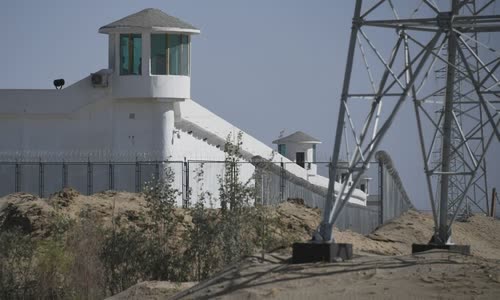The Australian Institute of Strategic Policy data shows that the Xinjiang region has more than 380 facilities that are suspected of being "prisons".
The number of alleged "detention facilities" in Xinjiang announced by the Australian Institute of Strategic Policy (ASPI) on September 24 is about 40 percent higher than the institute's previous estimates.

A security station near what Beijing calls a vocational training center on the outskirts of Hoa Dien City, Xinjiang, China, May 30, 2019 Photo: AFP
"The findings of this study contradict Chinese officials' claims that all 'trainees' from the vocational training center have graduated by the end of 2019," ASPI researcher Nanthan Ruser
ASPI researchers used satellite imagery, eyewitness accounts, media reports, and many other sources to detect and classify the above facilities, depending on security features such as walls.
They discovered at least 61 facilities that were newly built and expanded during the year, as of July this year.
The above ASPI data is part of the Xinjiang Data project, which includes detailed studies not only of the network of facilities that are suspected of being prisons, but also of cultural sites within the municipality.
Researcher Ruser notes that many of the centers that have been expanded are higher-security facilities, while others are built near industrial zones, showing those who were brought in here to "coerce".
The information was released by ASPI amid increasing tensions between Australia and China in recent years when Canberra accused Beijing of interfering in internal affairs, which Beijing denied.
Since the beginning of 2017, China has accused Quoc of bringing about one million Uighurs and Muslim minorities to concentration camps.
US President Trump in June signed to enact the Uighur Human Rights Policy Act, which calls for the punishment of those responsible for "mass detention of Uighurs and other Muslim groups in Xinjiang",
China calls the US moves on Xinjiang a "rough intervention" in its internal affairs.



 Vyanjana Vyas
Vyanjana Vyas







